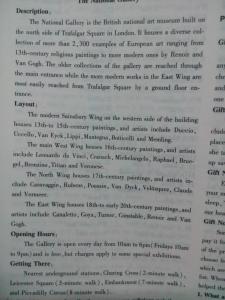随着中国经济的发展和与国际社会联系日益紧密,中国人对于英语的重视也与日俱增,对于英语学习的狂热程度愈发高涨。小编精心收集了关于演讲技巧的英语短文,供大家欣赏学习!
关于演讲技巧的英语短文
克服演讲紧张的5种方法
Most people feel nervous prior to giving a speech. This is human nature and indeed some degree of nerves is absolutely essential to remain alert and deliver the speech clearly. However nerves do become a problem if they are debilitating in any way. Thankfully, there are practical ways to overcome this which are outlined below.
Rationalize your nerves
First of all, silently and in advance of your speech, rationalise your thoughts. What are nerves? Nerves are simply a fight or flight response to danger. If you anticipate something you fear adrenaline will pump around your body causing you to feel anxiety. Although it may feel uncomfortable, nothing bad will happen to you. In fact look at your nerves as a positive thing as they will give you the energy to deliver your speech in an emotive, engaging and passionate way.
Prepare and Practice
The more familiar you are with something, the less uncomfortable it makes you feel. Think about your first day at work and think about how you feel at work now? The anxiety levels will have undoubtedly reduced the more familiar you are with your role, surroundings, colleagues etc. Apply this principle to your speech. First of all, know the subject of your speech inside out. Write the speech in the format it is to be delivered i.e. on PowerPoint or acetates. Prepare speaker notes that give you prompts on the title of the slide and its contents. If there are any names or statistics that you might find difficult to remember, include them on your speaker notes. These notes are not designed to be read from, but are designed to be held by the speaker and glanced at every so often to prompt the speaker and facilitate the flow of the presentation from beginning to end. They should be produced on small, discrete cards that can be hand held.
Engage with the audience

Familiarise yourself with who the audience is going to be, how many people will be listening and what their objectives are by listening to your speech. You must understand your target audience before writing the presentation so that you hit the correct tone and deliver it using the appropriate vocabulary. If it is fitting, circulate your presentation to a select few members of the audience ahead of the speech and ask for their feedback. Again once this is done, if it is appropriate, circulate the speech to the audience beforehand so that they know what to expect and have an opportunity to prepare any questions in advance.
Structure the presentation
Make sure you structure your speech in a logical way. You want your message to be delivered in as clear and concise way as possible i.e. a beginning (introduction), middle (main body) and end (conclusion). The best way to remember this is to ‘say what you are going to say; say it; and say it again! Always thank the audience for listening at the end of the speech and invite them to ask any questions.
Keep Calm
There is no need to panic. What is the worst that can happen? Even if you mix the presentation up, chances are the audience will not even notice. If your mind goes blank, take a sip of water. If it helps to imagine the audience have no clothes on, then use this visualisation technique! Take deep breaths, talk slowly, make eye contact and smile. Remember that everyone in the audience is there because they want to hear what you have to say.
 爱华网
爱华网



